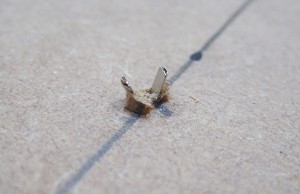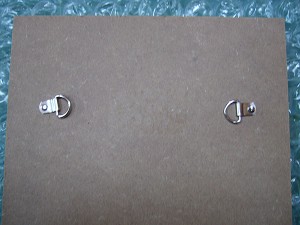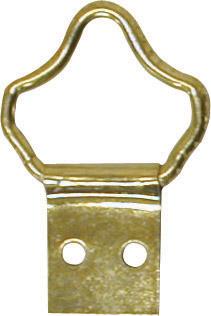 Pictures are most commonly hung using a pair of D-Rings screwed onto the back of the each side of wooden (or plastic) picture frame. They provide attachment point loops that picture cord or wire can be then be strung between. The cord or wire can then be used to hang the frame from a picture hook (nail, screw or similar) that is attached to the wall.
Pictures are most commonly hung using a pair of D-Rings screwed onto the back of the each side of wooden (or plastic) picture frame. They provide attachment point loops that picture cord or wire can be then be strung between. The cord or wire can then be used to hang the frame from a picture hook (nail, screw or similar) that is attached to the wall.
Single hole D-Rings are the most basic form of hardware for this purpose. They are useful for most frames up to about 0.5m wide. Wider than 0.5m but < 1m or when using a heavier frame/moulding, then double D-Rings are advised, they are more robust than single D-Rings and have two screw holes.
The Procedure for attaching D-Rings to a picture frame –
- Picture Frame Backing Tape
- D-Rings (x2)
- Pan headed screws (x2)
- Picture Cord or Picture Wire
- Bradawl
- Screw driver (pozi)
Procedure
- Apply frame backing tape around each back edge for the frame/backing board to seal the frame from dust mites and dampness.
- Measure approximately 1/3 of the distance down on one side of the frame and mark with pencil/pen. Measure down the other side the exact same distance and mark again.
- Use a bradawl to poke a small hole into the frame backing at this mark on each side, this will provide a start for the screws.
- Line up the D-Rings and screw with the pre started holes and screw the D-rings into place. The D’s (loops) of the D-Rings should be facing each other.
- Tie a cord between each D-Ring and secure with a knot. Alternatively, wire and ferrules can be used instead.
- Finish the cord ends off with a bit of frame backing tape to stop them fraying.
- You picture is ready to hang on a picture hook.















